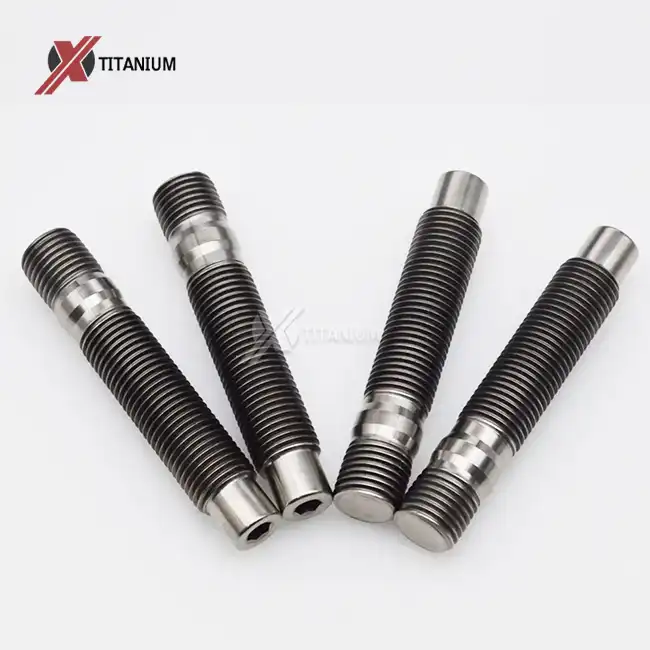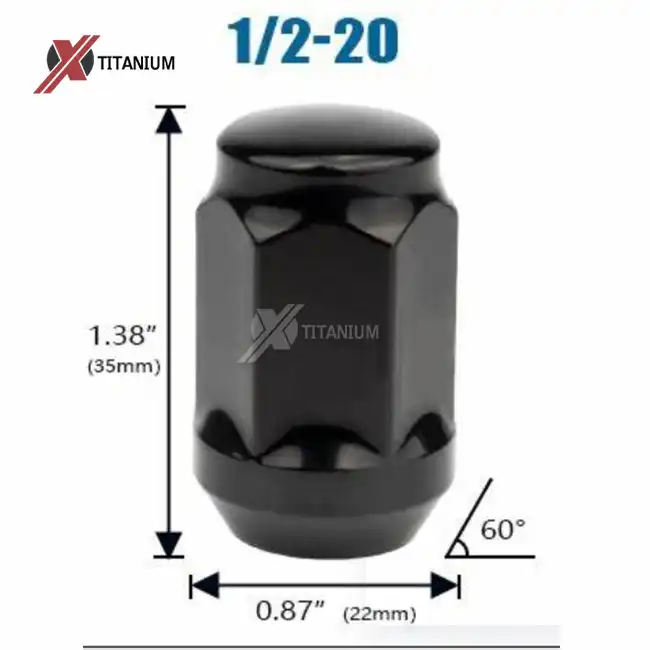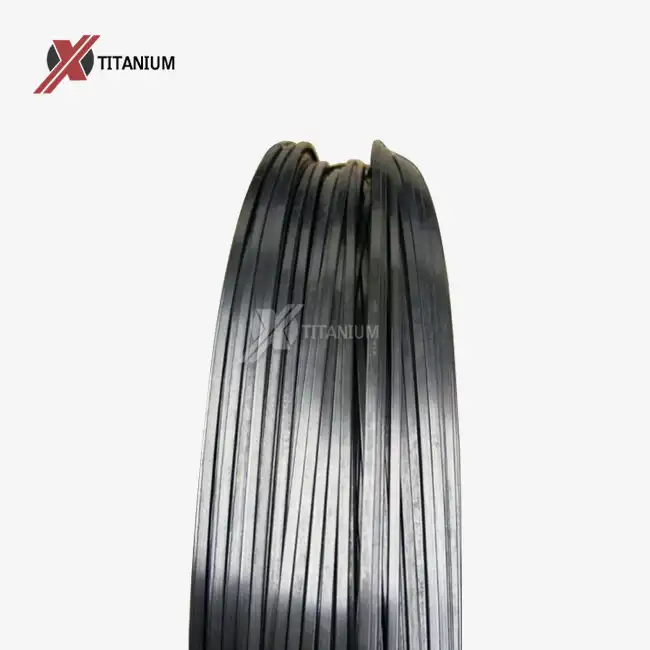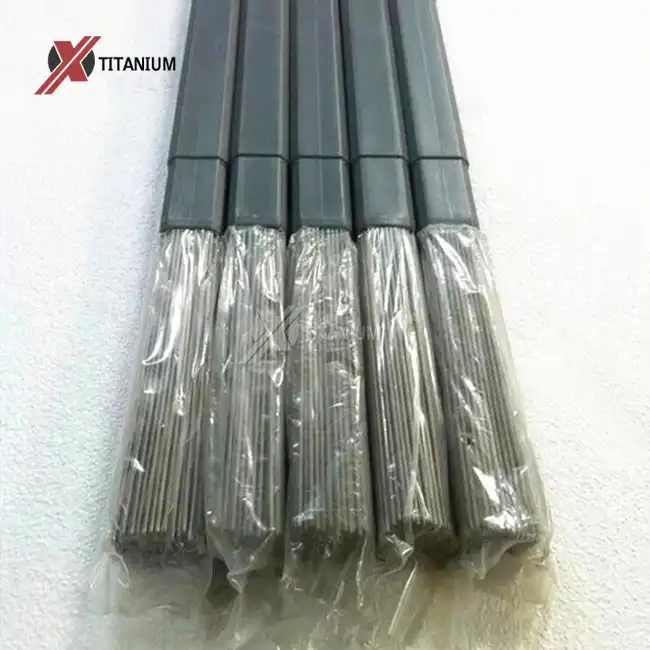Understanding Chainring Bolt Specifications and Materials
Chainring bolts play a vital role in securing the chainrings to the crankset of a bicycle. These small but crucial components come in various specifications and materials, each suited for different applications and rider preferences. Understanding these aspects is essential for both maintenance and performance enhancement.
Common Chainring Bolt Sizes and Thread Types
Chainring bolts typically come in a few standard sizes, with the most common being M8 (8mm diameter) and M10 (10mm diameter). The length of the bolts can vary depending on the specific chainring and crankset configuration. Thread pitch is another important factor, usually ranging from 0.75mm to 1.0mm for most chainring bolts.
It's worth noting that some high-end bicycles and specialized setups may use proprietary bolt sizes or threading. In such cases, it's crucial to consult the manufacturer's specifications or seek professional assistance when replacing or upgrading these components.
Materials Used in Chainring Bolts: From Steel to Titanium
Traditionally, chainring bolts have been made from steel due to its strength and affordability. However, advancements in material science and manufacturing techniques have introduced alternative materials that offer unique benefits:
- Steel: Durable and cost-effective, but relatively heavy.
- Aluminum: Lighter than steel, but may not be as strong for high-stress applications.
- Titanium: Offers an optimal balance of strength, weight, and corrosion resistance.
Titanium chain ring bolts have gained popularity among cycling enthusiasts and professional riders alike. These bolts offer several advantages over their steel or aluminum counterparts:
- Exceptional strength-to-weight ratio
- Superior corrosion resistance
- Longevity and durability
- Aesthetic appeal, especially when anodized in various colors
While titanium chain ring bolts may come at a premium price point, their performance benefits and longevity often justify the investment for serious cyclists and those seeking to optimize their bike's performance.
The Importance of Proper Chainring Bolt Measurement and Selection
Selecting the right chainring bolts is more than just a matter of aesthetics or weight savings. Proper bolt selection directly impacts the safety, performance, and longevity of your bicycle's drivetrain. Let's delve into why accurate measurement and careful selection of chainring bolts, particularly titanium chain ring bolts, is so crucial.
Safety Considerations in Chainring Bolt Selection
The primary function of chainring bolts is to securely fasten the chainrings to the crankset. This connection must withstand significant forces during pedaling, especially during high-power efforts or off-road riding. Incorrectly sized or low-quality bolts can lead to several safety issues:
- Loose bolts may cause the chainring to wobble, affecting pedaling efficiency and potentially leading to chain derailment.
- Overly long bolts can interfere with the chain's movement, causing skipping or jamming.
- Bolts that are too short may not engage enough threads, risking sudden failure during rides.
By accurately measuring and selecting the appropriate chainring bolts, including high-quality options like titanium chain ring bolts, riders can ensure a secure and safe connection between the chainrings and crankset.
Performance Implications of Chainring Bolt Choice
Beyond safety, the choice of chainring bolts can have subtle but noticeable effects on a bicycle's performance:
- Weight: Lighter bolts, such as titanium chain ring bolts, contribute to overall weight reduction, which can be beneficial for competitive cycling or long climbs.
- Stiffness: High-quality bolts maintain proper tension, ensuring efficient power transfer from the pedals to the drivetrain.
- Durability: Corrosion-resistant materials like titanium can extend the lifespan of the bolts, reducing maintenance needs and potential mid-ride issues.
For riders pushing the limits of their equipment, whether in racing scenarios or extreme conditions, the cumulative effect of these small improvements can make a significant difference in overall performance and reliability.
Compatibility and Installation Considerations
Proper measurement and selection of chainring bolts also ensure compatibility with your specific bicycle setup. Different cranksets and chainring combinations may require bolts of varying lengths or diameters. Additionally, some modern cranksets use proprietary bolt designs that may not be interchangeable with standard options.
When opting for titanium chain ring bolts, it's essential to consider the following:
- Ensure the bolt length matches your specific chainring and crankset combination.
- Verify that the thread pitch is compatible with your crankset's threading.
- Consider using titanium-specific installation techniques, such as anti-seize compounds, to prevent galling.
- Follow manufacturer-recommended torque specifications during installation to avoid over-tightening, which can damage titanium bolts.
By paying attention to these details, cyclists can reap the full benefits of upgrading to titanium chain ring bolts while avoiding potential compatibility or installation issues.
Maintenance and Care Tips for Chainring Bolts
Proper maintenance of chainring bolts is essential for ensuring the longevity and optimal performance of your bicycle's drivetrain. This is particularly true for high-performance components like titanium chain ring bolts, which represent a significant investment in your bike's setup. Let's explore some key maintenance and care tips to keep your chainring bolts, especially titanium ones, in top condition.
Regular Inspection and Tightening Procedures
Periodic inspection of your chainring bolts should be a part of your regular bicycle maintenance routine. Here are some steps to follow:
- Visual Inspection: Regularly check for any signs of wear, corrosion, or damage on the bolts.
- Tightness Check: Use a torque wrench to ensure the bolts are tightened to the manufacturer's specifications. This is crucial for titanium chain ring bolts, as they may require different torque settings compared to steel or aluminum bolts.
- Thread Condition: Examine the bolt threads for any signs of stripping or damage.
- Chainring Alignment: Verify that the chainrings remain properly aligned after checking the bolts.
For titanium chain ring bolts, it's recommended to perform these checks more frequently during the initial period after installation, as they may settle slightly differently compared to other materials.
Cleaning and Lubrication Best Practices
Proper cleaning and lubrication can significantly extend the life of your chainring bolts and maintain their performance:
- Cleaning: Use a degreaser and soft brush to clean the bolts and surrounding areas thoroughly. For titanium chain ring bolts, avoid abrasive cleaners that might damage their surface finish.
- Drying: Ensure the bolts and chainring area are completely dry after cleaning to prevent corrosion.
- Lubrication: Apply a thin layer of appropriate lubricant to the bolt threads. For titanium bolts, use a titanium-specific anti-seize compound to prevent galling.
- Excess Removal: Wipe away any excess lubricant to avoid attracting dirt and debris.
Regular cleaning not only maintains the appearance of your titanium chain ring bolts but also allows for early detection of any potential issues.
When to Replace Chainring Bolts?
Even high-quality titanium chain ring bolts will eventually need replacement. Here are some indicators that it might be time for new bolts:
- Visible Wear: If you notice significant wear, pitting, or deformation on the bolts.
- Loosening Issues: Bolts that consistently come loose despite proper tightening may indicate thread damage.
- Corrosion: While titanium is highly corrosion-resistant, severe environmental exposure can still cause damage over time.
- Age: Even if they appear fine, consider replacing bolts after several years of use as a preventive measure.
- After Crashes: If your bike has been involved in a crash, inspect the bolts carefully and replace them if there's any doubt about their integrity.
When replacing chainring bolts, consider upgrading to titanium chain ring bolts if you haven't already. Their durability and performance characteristics make them an excellent long-term investment for serious cyclists.
Conclusion
Understanding how to measure chainring bolts is crucial for maintaining your bicycle's drivetrain and making informed upgrades. By following the guidelines outlined in this article, you can ensure that you select the right bolts for your needs, whether you're sticking with standard options or upgrading to high-performance titanium chain ring bolts. Remember that proper measurement, selection, and maintenance of these small but critical components can significantly impact your cycling experience, from safety to performance.
If you're considering upgrading to titanium chain ring bolts or need expert advice on selecting the right components for your bicycle, don't hesitate to reach out to us at Baoji Chuanglian New Metal Material Co., Ltd. Our team of specialists is ready to assist you in finding the perfect titanium solutions for your cycling needs. Contact us at info@cltifastener.com or djy6580@aliyun.com for personalized support and top-quality titanium products.




